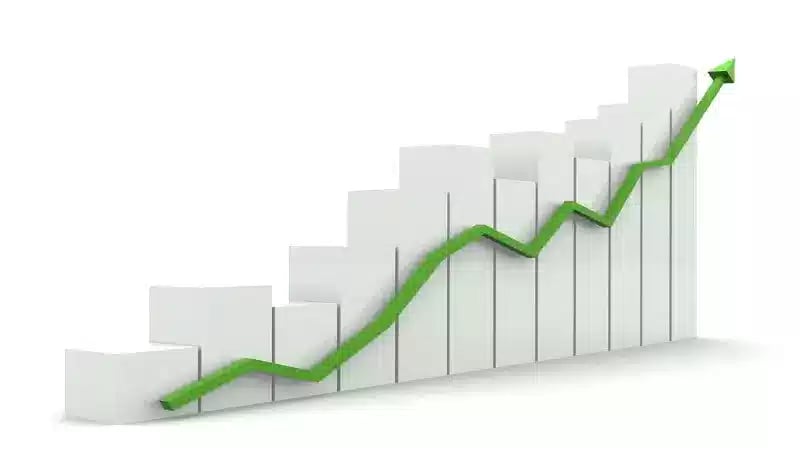What is Growth Marketing?
Growth marketing is more than just increasing leads or conversions. While those are important metrics, true growth marketing focuses on building a sustainable, data-driven system that fuels long-term business expansion.
Many businesses chase quick wins, but they often fail to establish a foundation for consistent growth. Therefore, we'll review a comprehensive guide to implementing a growth marketing strategy, equipping you with the knowledge to create lasting success.

What is Growth Marketing?
Traditional marketing often focuses on generating leads and building brand awareness, but growth marketing takes a more holistic view of the customer journey. By leveraging data and analytics, growth marketers can identify the most effective channels and tactics for acquiring and retaining customers and continuously optimize their strategies based on real-time feedback.
Growth marketing is a data-driven marketing approach that aims to acquire and retain customers while driving sustainable business growth. It's focused on identifying and optimizing key metrics throughout the customer journey, from acquisition to retention, to drive growth and profitability.
Growth marketing matters because it provides a more effective and efficient way to drive business growth. By focusing on the key metrics that drive growth and profitability, growth marketing enables businesses to achieve sustainable growth while minimizing costs and maximizing return on investment.
Additionally, growth marketing is particularly relevant in today's digital age, where the competition over customers is more intense than ever before. With the rise of e-commerce and the increasing use of digital channels, businesses need to adopt a data-driven and customer-centric approach to marketing to stay competitive and drive growth.
The Foundation of Growth Marketing
The foundation of a successful growth marketing strategy lies in understanding the customer journey and identifying the key metrics that drive growth and profitability. This requires a deep understanding of your target audience, their pain points and challenges, and the channels and tactics that are most effective in reaching and engaging them.
Here are some key components of the foundation of growth marketing:
-
Customer Journey Mapping: Customer journey mapping visualizes how customers interact with your brand, from awareness to purchase and beyond. By mapping out the customer journey, you can identify the key touchpoints and pain points where you can significantly impact customer experience and conversion rates.
-
Key Performance Indicators (KPIs): KPIs are the metrics you use to measure the success of your marketing efforts. These may include metrics such as customer acquisition cost (CAC), customer lifetime value (CLV), conversion rates, and revenue growth. By tracking these metrics over time, you can identify areas of strength and weakness in your marketing strategy and make data-driven decisions to improve performance.
-
Data Analytics: Data analytics collects, analyzes, and interprets data to gain insights into customer behavior and optimize your marketing strategy. This includes tools such as Google Analytics, which allows you to track website traffic, conversion rates, and other key metrics, and customer relationship management (CRM) software, which can help you track customer interactions and identify opportunities for cross-selling and upselling.
-
A/B Testing: A/B testing is testing different versions of a marketing asset (such as a landing page, ad copy, or email subject line) to see which version performs better. You can identify the most effective tactics for driving conversions by testing different variables and optimizing your marketing strategy.
-
Experimentation and Iteration: Finally, growth marketing is a continuous process of experimentation and iteration. This means constantly testing new channels, tactics, and messaging to see what works best for your target audience. By embracing a growth mindset and being willing to take risks and learn from failure, you can continuously improve your marketing strategy and drive sustainable growth.
The foundation of growth marketing is built on a deep understanding of the customer journey, the metrics that drive growth and profitability, and a data-driven marketing approach. Businesses can optimize their marketing strategy and drive sustainable growth by focusing on these key components.
Key Components of a Successful Growth Marketing Strategy
1. Content Marketing>
Content marketing involves creating and sharing valuable content that attracts and engages your target audience. This can include blog posts, whitepapers, infographics, and videos, among other types of content. Sharing valuable insights and addressing your target audience's specific pain points and challenges allows you to position yourself as a trusted authority in your industry and foster stronger connections with potential customers.
2. Social Media Marketing
Social media marketing is a powerful tool that allows businesses to reach and engage with their target audience on platforms like Facebook, Twitter, and LinkedIn. This can include tactics such as paid advertising, influencer marketing, and organic social media posts. By leveraging the power of social media to build relationships and connect with your audience, businesses can increase brand awareness and generate leads and sales.
3. Search Engine Optimization (SEO)
SEO is optimizing your website and content to rank higher in search engine results pages (SERPs) for relevant keywords and phrases. To boost traffic and sales, businesses can optimize their website and content by conducting keyword research, refining content, building links, and promoting on social media. Higher search engine rankings will lead to more website visitors and potential customers.
4. Email Marketing
Email marketing involves sending targeted emails to your subscribers and customers to keep them informed about your products and services and drive conversions. Email marketing encompasses a variety of tactics, including newsletters, promotional emails, and triggered messages based on customer behavior. Utilizing segmentation and personalization techniques, businesses can customize their emails to match the interests and needs of their audience, ultimately increasing engagement and driving conversions.
5. Conversion Rate Optimization (CRO)
CRO is the process of optimizing your website and marketing assets to improve conversion rates. By experimenting with different layouts, messaging, and calls to action, you can determine the most effective approach for your target audience. Optimizing your marketing assets can lead to increased conversions and revenue, ultimately driving sustainable growth for your business.
6. Growth-Driven Design (GDD)
GDD is a modern web design approach emphasizing continuous improvement and optimization based on user feedback and data analysis. Instead of waiting for a complete redesign, GDD involves launching a website quickly and iterating over time. This methodology is particularly valuable for growth marketing, allowing businesses to test and optimize website elements that impact conversion rates quickly.
The Role of Data in Growth Marketing
Data plays a critical role in growth marketing by providing insights into customer behavior, campaign performance, and overall business metrics. Here are some ways in which data can be used in growth marketing:
-
Customer Insights: Data can be used to understand customer behavior and preferences better. By analyzing customer data such as demographics, behavior, and purchase history, businesses can identify patterns and trends that can inform marketing strategy and improve customer acquisition and retention.
-
Campaign Optimization: Data can be used to optimize marketing campaigns by identifying what's working and what's not. By tracking key metrics such as click-through rates, conversion rates, and engagement, businesses can make data-driven decisions to improve campaign performance and maximize ROI.
-
Personalization: Data can be used to provide a personalized customer experience with tailored marketing messages and offers based on customer behavior and preferences. Businesses can deliver targeted and relevant messaging that resonates with each customer by segmenting customers based on data such as demographics, behavior, and purchase history.
-
Predictive Analytics: Data can be used to predict future customer behavior and identify growth opportunities. By leveraging predictive analytics, businesses can identify trends and patterns that inform marketing strategy and drive growth.
-
Continuous Improvement: Data can be used to continuously improve marketing efforts by identifying areas for improvement and testing new tactics. By tracking key metrics over time and experimenting with new strategies, businesses can optimize their marketing efforts for maximum impact.
To leverage data effectively in growth marketing, businesses need to have the right infrastructure in place. This includes tools for data collection, analysis, and visualization, as well as skilled data analysts and marketers who can interpret and act on the insights provided by the data.
Data is the lifeblood of growth marketing. By using data to guide your decision-making, you can identify what's working, what's not working, and where to focus your efforts for maximum impact.
Growth Marketing Tools
Growth marketing involves leveraging data and technology to drive growth for your business. Here are some of the most helpful growth marketing tools to help you achieve your marketing goals:
1. Google Analytics
Google Analytics is a free tool that tracks and analyzes website traffic and user behavior. With Google Analytics, you can gain valuable insights into how visitors interact with your website, which pages are most popular, and which marketing channels drive the most traffic and conversions.
2. A/B Testing Tools
A/B testing tools such as Optimizely and VWO allow you to test different variations of your website and marketing assets to see which performs best. By testing different variables, such as headlines, calls-to-action, and images, you can identify the most effective messaging and design for your target audience.
3. Customer Relationship Management (CRM) Tools
CRM tools like HubSpot and Salesforce allow you to manage customer relationships and track interactions with prospects and customers. With a CRM, you can segment your audience, personalize your marketing messages, and track the effectiveness of your marketing campaigns.
4. Email Marketing Platforms
Email marketing platforms such as Mailchimp and Constant Contact allow you to create and send targeted emails to your subscribers and customers. Email marketing lets you inform your audience about your products and services, promote new offers and promotions, and drive conversions.
5. Social Media Management Tools
Social media management tools like Hootsuite and Buffer allow you to manage your social media presence and schedule posts across multiple platforms. With social media management tools, you can track engagement with your posts, monitor brand mentions and comments, and engage with your audience in real time.
6. SEO Tools
SEO tools like Semrush and Ahrefs allow you to track your website's search engine rankings and analyze your competitors' SEO strategies. With SEO tools, you can identify opportunities to improve your website's visibility in search results, optimize your content for relevant keywords, and track your progress over time.
How to Establish Your Growth Marketing Strategy
"Growth marketing is not a one-size-fits-all approach. Every business is unique, and a successful growth marketing strategy requires a tailored approach that takes into account your specific goals, audience, and market."
While there is no cookie-cutter approach to growth marketing, there are some general steps to get you started in the right direction:
-
Define your target audience: Who are your ideal customers, your buyer personas? What are their pain points, and how can you solve them?
-
Conduct a thorough analysis of your current marketing efforts: What's working, what's not working, and what needs to be improved?
-
Develop a comprehensive growth marketing strategy: Define your goals, KPIs, and a roadmap for achieving them.
-
Create a high-converting website: Use growth-driven design principles to create a website optimized for conversion.
-
Invest in the right marketing channels: Determine which channels will most effectively reach your target audience and allocate resources accordingly.
-
Use data to drive decision-making: Continuously track and analyze data to identify areas for improvement and make data-driven decisions.
-
Experiment and test: Try new tactics and strategies, and use A/B testing to optimize and refine your campaigns.
-
Build a strong brand: Develop a consistent brand message and voice that resonates with your target audience.
-
Foster a culture of experimentation: Encourage a growth mindset and a willingness to try new things throughout your organization.
-
Monitor progress and adjust course as needed: Regularly assess progress against your KPIs and adjust your strategy to stay on track.
Need a hand with it?
Frequently Asked Questions
Growth marketing is a marketing strategy that focuses on identifying and executing tactics to drive sustainable growth for a business. It involves leveraging data, technology, and creativity to acquire and reactain customers, increase revenue, and maximize the lifetime value of customers.
Some common growth marketing tactics include A/B testing, email marketing, search engine optimization (SEO), social media marketing, and referral marketing. The specific tactics used will depend on the business and its goals.
Traditional marketing focuses on creating brand awareness and generating leads through advertising, PR, and events. On the other hand, growth marketing focuses on rapid experimentation, data analysis, and optimization to drive measurable growth for a business.
The success of growth marketing campaigns can be measured using key performance indicators (KPIs) such as website traffic, conversion rates, customer acquisition costs, customer lifetime value, and revenue growth. It's important to track these metrics over time and make data-driven decisions based on the results.
One of the biggest challenges of growth marketing is the need for continuous experimentation and optimization. This can be time-consuming and requires a data-driven approach. Another challenge is the need for cross-functional collaboration across marketing, product, and engineering teams to achieve the best results.
To start with growth marketing, clearly understanding your business goals and target audience is important. You can identify growth opportunities from there and experiment with different tactics to see what works best. It's also important to track your progress and make data-driven decisions to improve your marketing efforts continuously.
Content marketing trends include the substantial leverage of technology and AI to accelerate and intensify proven approaches, Content Marketing, Marketing Automation, and Personalization to understand, identify, attract, and engage your target audience better than ever before.
This content is also available in:
- Deutsch: Was ist Wachstumsmarketing?
- Español: ¿Qué es el marketing del crecimiento?
- Français: Qu'est-ce que le marketing de croissance ?
- Italiano: Che cos'è il Growth Marketing?
- Română: Ce este Growth Marketing?
- 简体中文: 什么是增长营销?










Leave a Comment